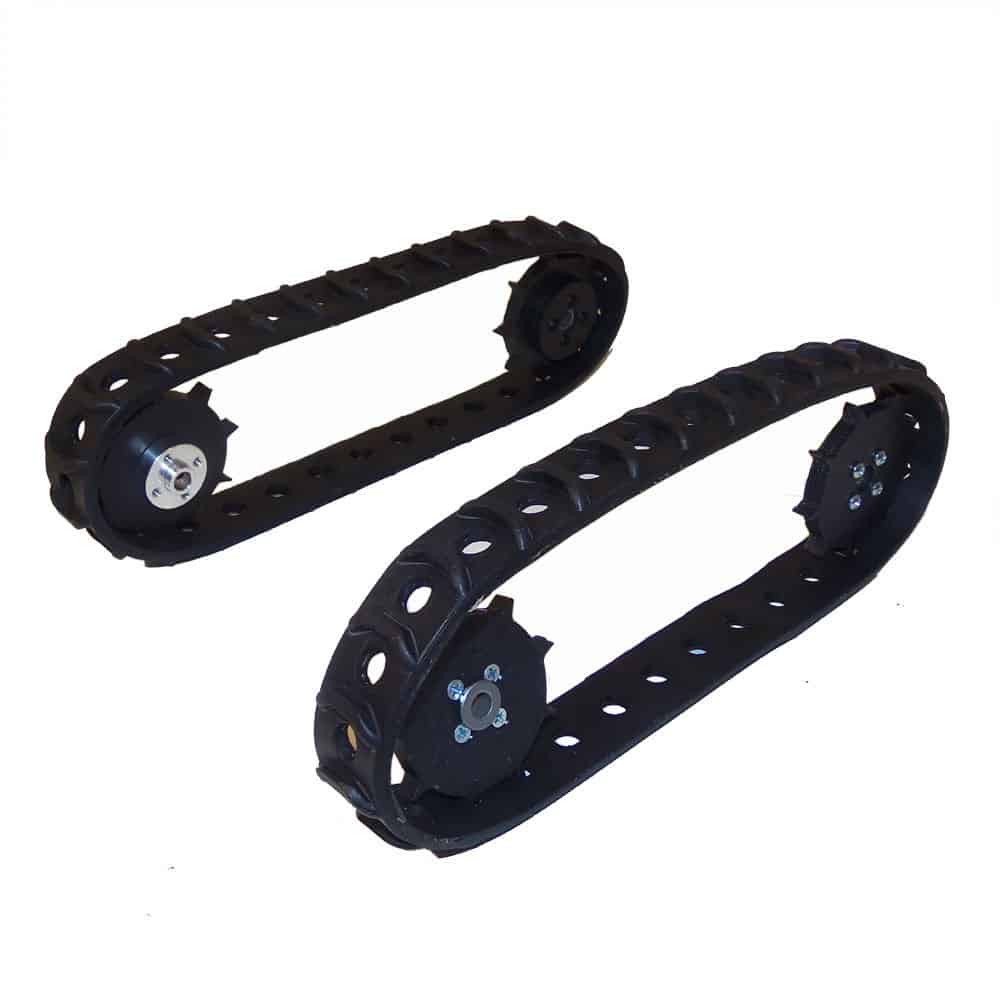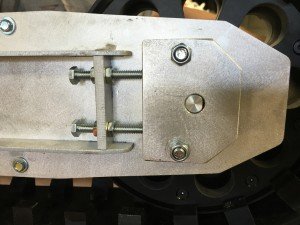
Today’s topic is going to be about tread length, tensioning and adjustment. We have received a lot of
questions asking about custom tracks and how to select the right one for your application.
Our molded tracks come without a splice and are formed together therefore can be made at custom
lengths, however once formed there is no changing it again like with our DIY Wheels, Tracks andTreads. Those you can simply cut the tread and put a new splice in place. With the molded tracks we
have several different sizes to choose from.
This is a set of treads 1 inch wide and 28.5 inch (522mm) circumference. The length can be changed on
the tread but the pitch cannot. The pitch is the space between the hole to hole distance. That is a
constant. The SST tread is 18mm from center of one hole to the center of the next. In order for your
track to be complete it must line up every 18mm all the way around. This means you have to design
your model to end up giving your tread length a number that is divisible by 18.
Say you want your tread to be 32 inches long. Convert that to mm, 32*25.4= 812.8. We have to take
the number and divide by 18mm. 812.8/18= 45.155. That means you want a track with 45.155 holes in
it which obviously you cant have .155 of a hole.
Now you have to make a choice if you want your track to be a little longer or a little shorter than 32
inches. Take 45 holes and multiply it by the pitch (18mm) and you get 45*18=810. Convert back to
inches and your track length will be 31.89 inches long. You can go one more pitch hole (46) and end up
with 46*18=828mm. Converted back to inches and you get 32.59 inches.
To accommodate for this we use track tension adjustment slots in all of our robots. For the smaller SST
and MLT-JR we use only a slotted hole and rely on the person assembling the robot to “manually” put
tension on the track and tighten down the axle.
For our larger robots we use blocks with threaded tension bolts to put a lot of tension on the treads.
See the pictures below for ideas or see how we have designed it.


From the pictures above you can see that we have slots in the chassis. The tension block is a 3/8 inch thick piece of aluminum that holds the axle. It is bolted to the chassis with two 5/16 bolts. Once the track is wrapped around the wheel, we tighten the two “jacking” bolts that put tension on the tread. We then tighten down the two bolts that are holding the plates to the chassis and have a solid axle mount.
With all of the tread sizes, the amount of tension you put on the tread is important. It will take some experience on how much or how tight to get the tread. Too little tension and the track could come off the wheel, too much tension and there will be too much friction on the system. The wrong amount of tension can also cause the teeth to not line up with the pitch on the tread. If you see the tread start to climb off the wheel, this could be an indication you need to adjust the tension on your tread.

